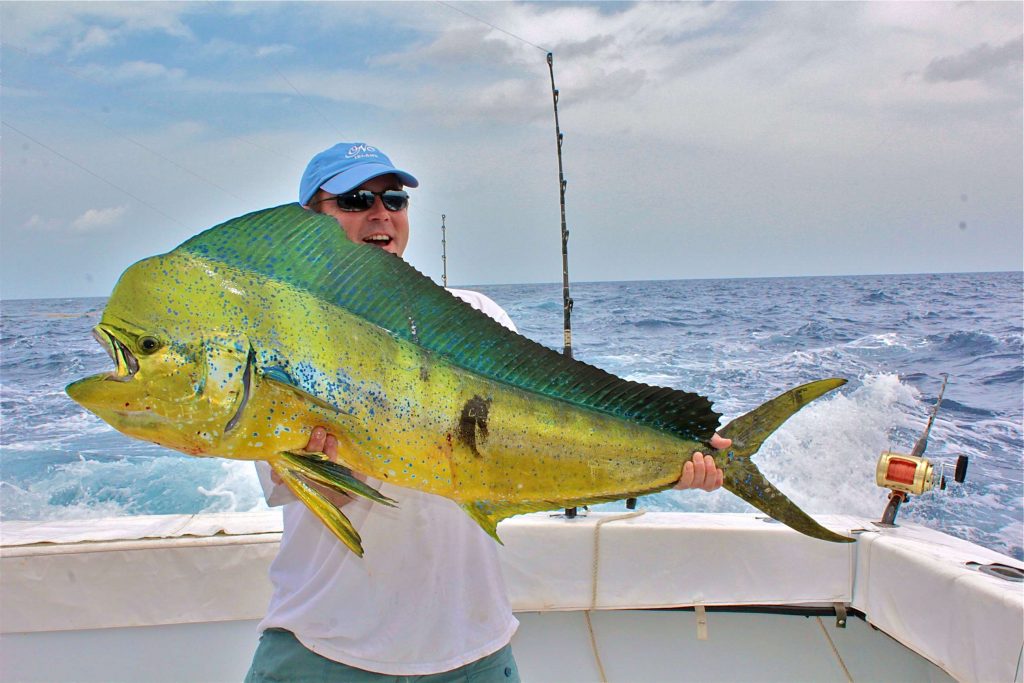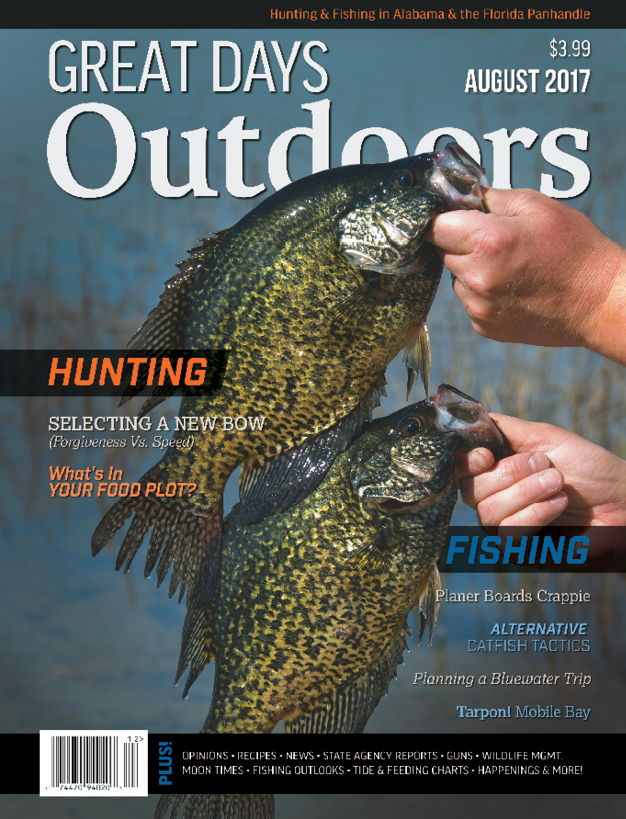The clear blue and purple water of the wide-open Gulf of Mexico showed the flashing deep-water prisms that tell an angler that the shallow waters of the coast are far away. On this overnight fishing trip, there’s no line of coast on the horizon and the small craft have been left far behind.
The only thing other than water and sky that can be seen this far from shore is a floating city of lights and machinery. One of the massive offshore oil drilling rigs grows rapidly larger as we approach the structure. This oil rig and the waters surrounding it are our main destination for this blue-water fishing trip. For the rest of this day, through the night and for the next day, this crew of eager anglers will be in the land of the giants where the biggest of big-game fish are found. Tuna, billfish, wahoo, big dolphin fish, also called mahi mahi, and the rest of the biggest of the hard-pullers are here.
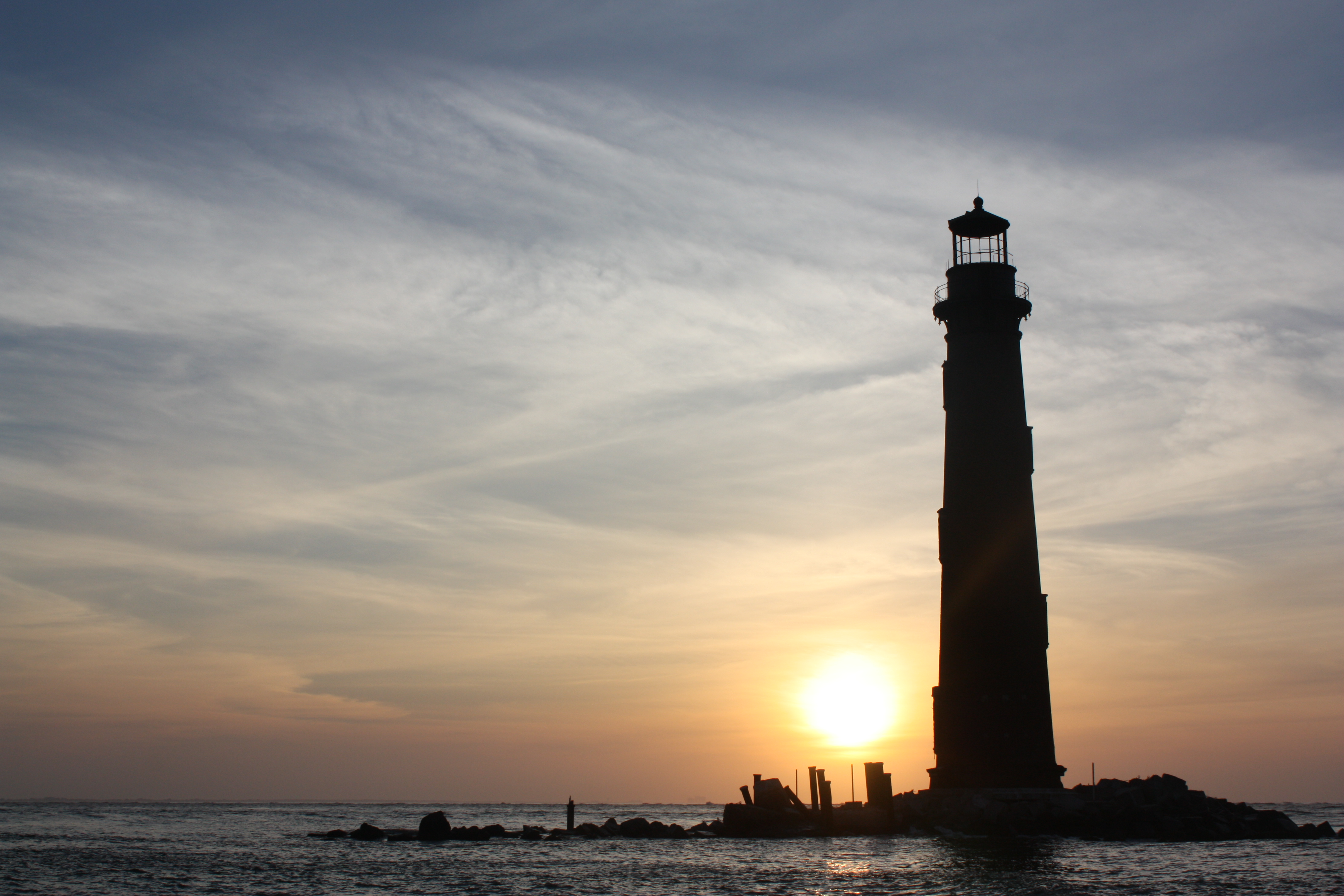
The Ultimate Fishing Trip
For anglers who want the ultimate multi-day fishing adventure, there’s nothing quite like an overnight fishing trip far out into the Gulf of Mexico’s beautiful blue waters. On the long run from Dauphin Island, we stopped at a variety of reefs and wrecks to see what was home. Snapper, triggerfish, several kinds of grouper and some very big, mean amberjack came over the rail at these stops. With the reef stops, we are just getting the crew limbered up for the real deal of this trip.
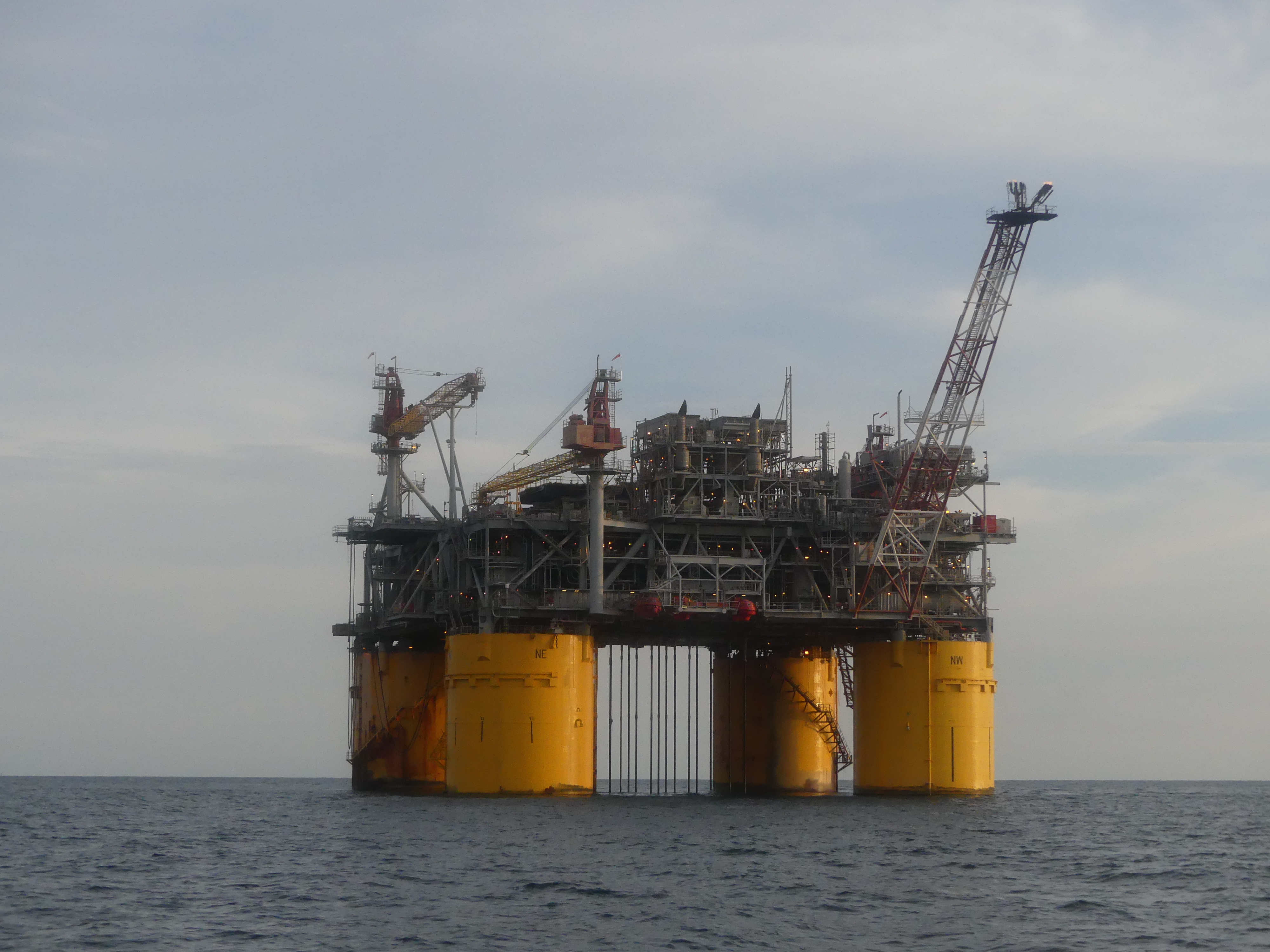
As the loaded boat approaches the oil rig, trolling lines go over the stern. A wide range of lures and baits begin to skip and jump in the boat wake. Quite soon, lines become tight. Some smaller blackfin tuna and an occasional larger yellowfin tuna start to come to the boat where they are gaffed and lifted over the rail and then deposited in the massive fish box.
Although this late afternoon fishing in motion is fun, I can’t wait for the night to fall. When the lights on the boat come on, the deep-water jigging begins. More on that later.
The day starts to move into dusk. Supper is served and eagerly eaten. Anglers clean up from their day of fishing and the long trip from Dauphin Island 80 miles out into the gulf. The lights from the massive oil rig twinkle in the deepening night. Some of the anglers give in to exhaustion and head to the comfortable bunks and air conditioning below, but the nightshift is getting ready for the real fun of an overnight fishing trip.
I check the knots and lines on my heavy tuna-jigging rig. The 60-pound-test braid line and 85-pound-test fluorocarbon leader give me a chance to land anything that might come along after darkness falls and some pretty big stuff just might come along. I have a heavy jigging spoon ready.
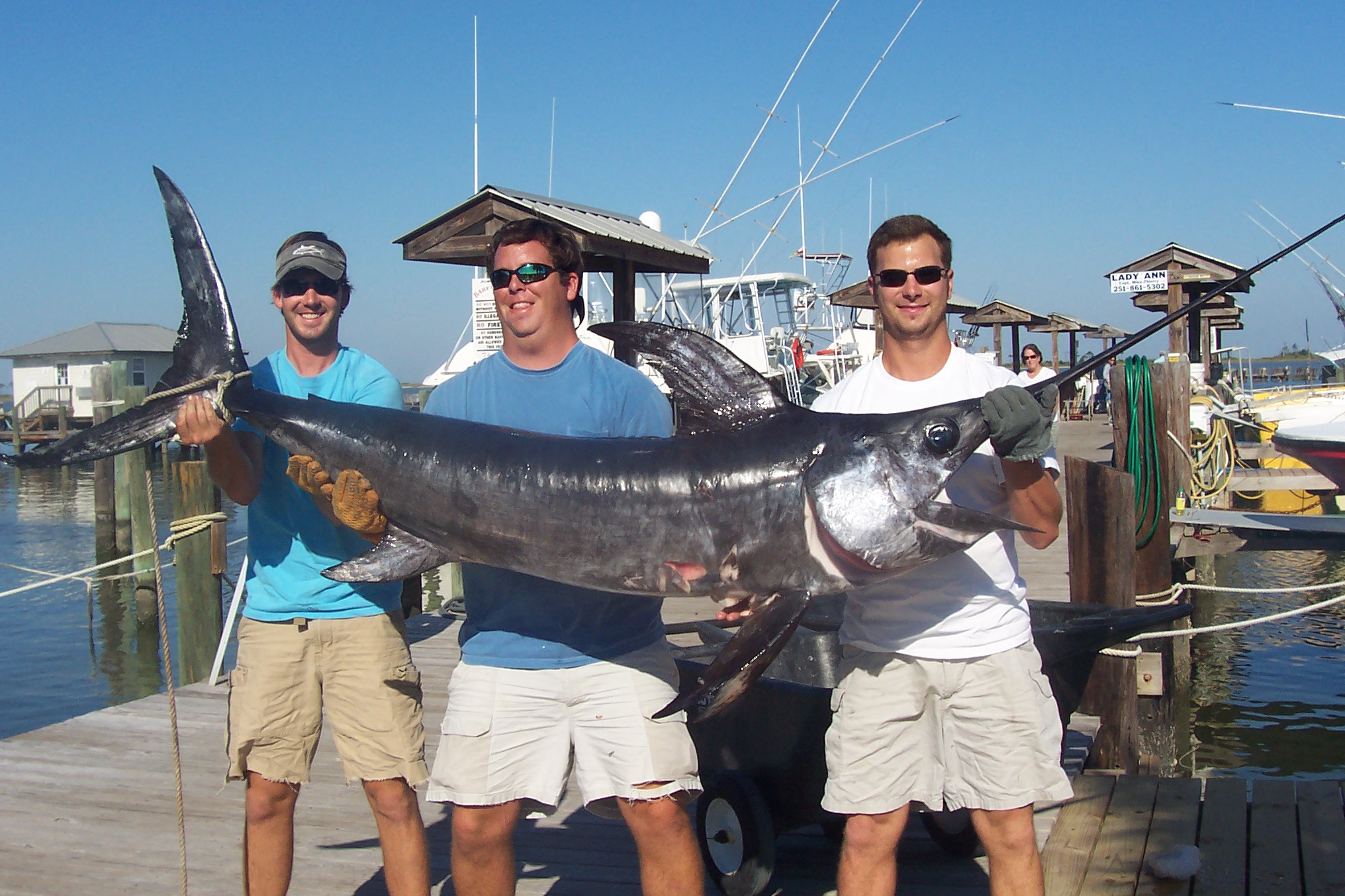
Then, the captain shuts down the engines and we drift silently on the flat, calm gulf. We’ll drift all night. Lights that shine down from the boat into the darkening water light up a circle of brightness. Soon, small squid and other potential food for bigger fish start to flash through the light. Then, just like that, it’s dark and night is here.
I drop my heavy jig into the water and let it freefall out of sight into the black water below. For a couple of minutes, I do nothing but let the jig fall. Then, the jig stops, but the bottom is still a few thousand feet below. It’s something else that has stopped the fall of my lure.
I engage the reel, take up slack and then reel as fast as I can. My rod bends way far over. My reel drag gives some line and I am in a battle with something far below that doesn’t want to come up. It takes me a few minutes and some intense effort, but before long, I can see flashes far below me in the clear water at the edge of the circle of underwater light.
This blackfin tuna is not huge, but a 20-pounder like this one that I hooked is a true big-game fighter. Once caught, it will be delicious on the grill.
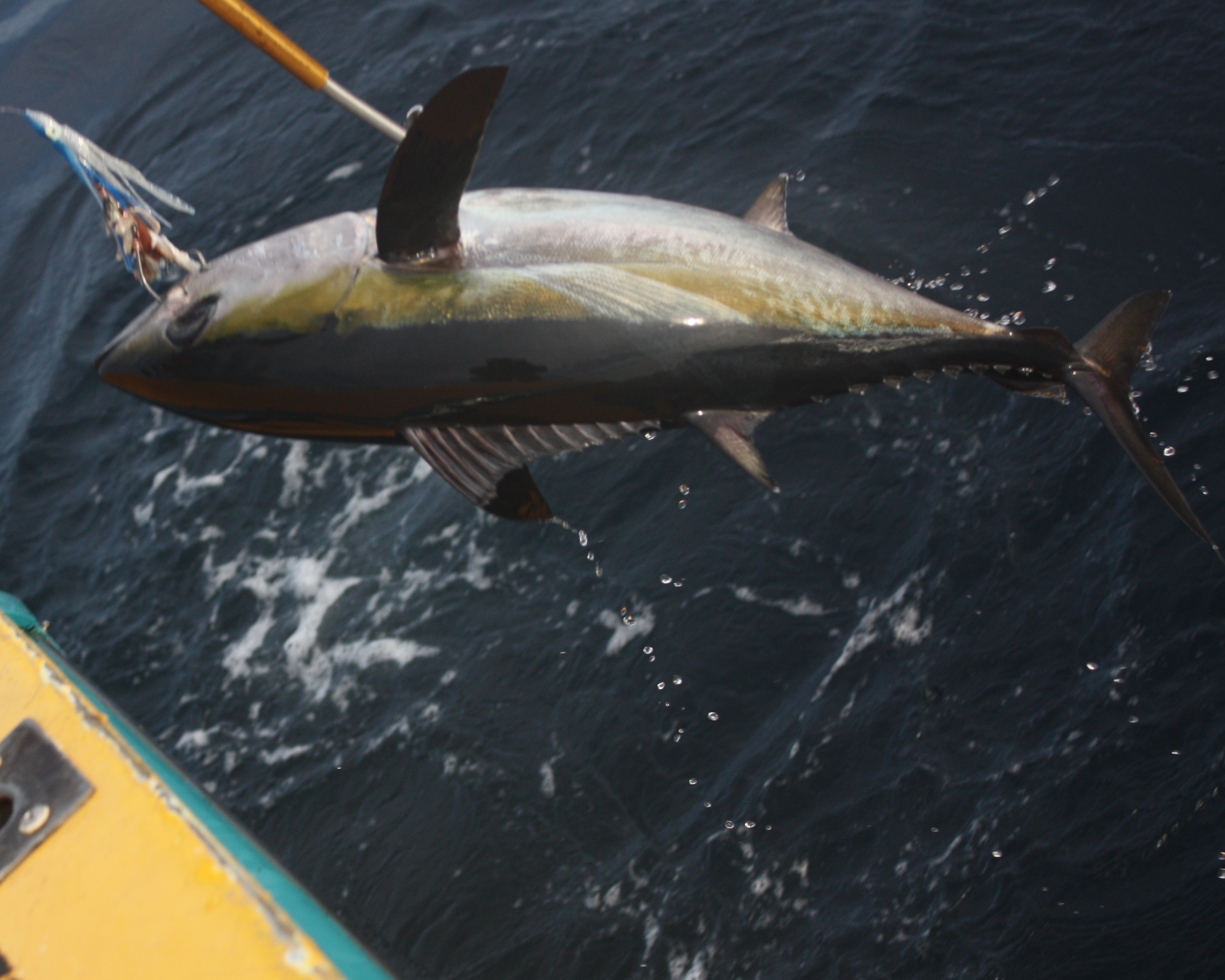
I have the tuna at boat side. A buddy with a gaff reaches down. With a jerk and a lift, my first tuna of the night is thumping the deck. I remove the circle hook of the jig and carry the tuna to the fish box. This is just the first of very many tuna we’ll catch this night.
Blackfin tuna are only a small part of the total blue-water fishing package that anglers will receive on an overnight fishing trip on the Gulf Coast. There are very many potential fishing and catching rewards on this kind of fishing trip.
Getting Ready By Planning Ahead
Anglers who want to take a long distance overnight fishing trip will soon realize that this sort of trip doesn’t happen every weekend. Such a multi-day trip will require some planning and some good weather luck, too.
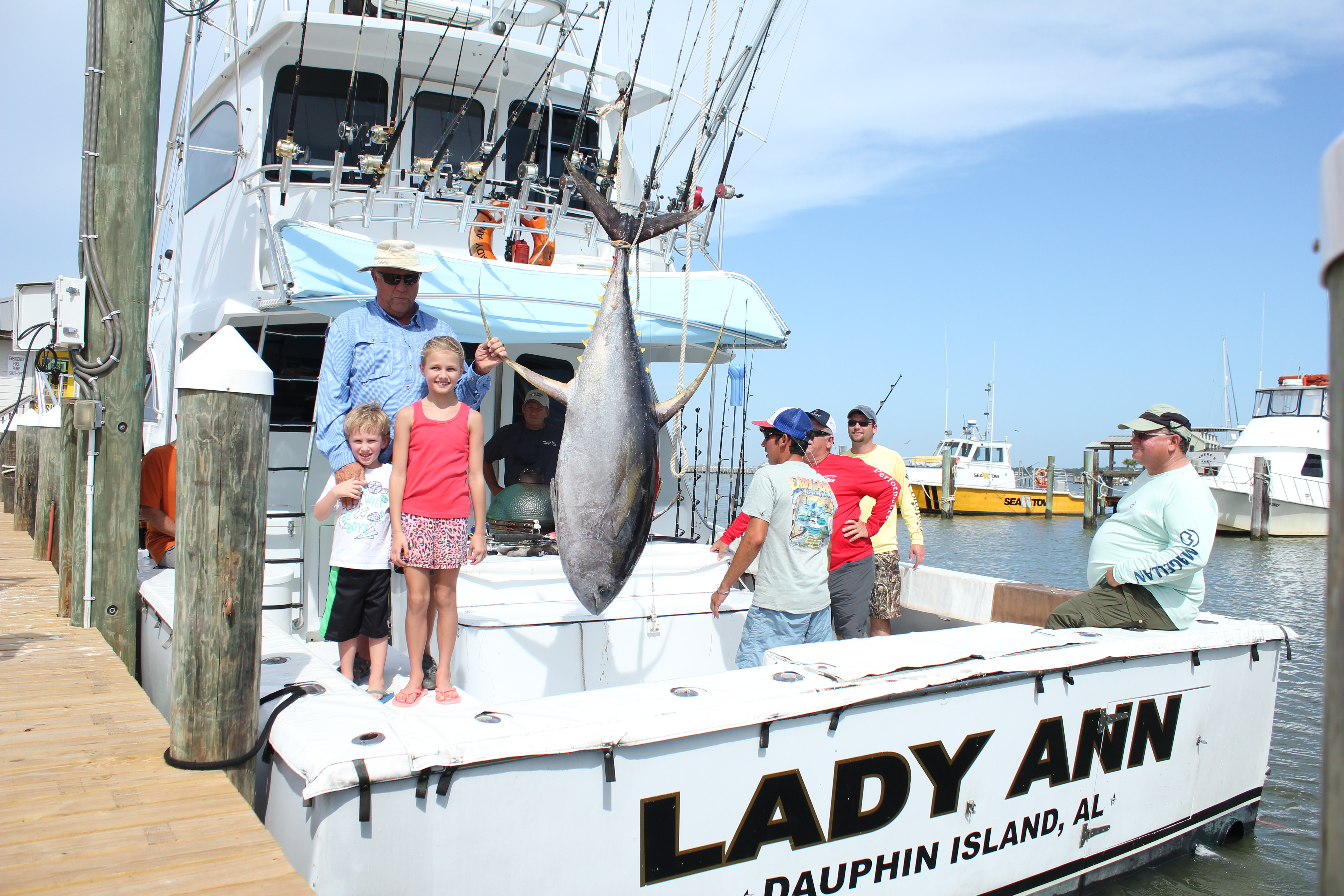
Capt. Mike Thierry and his son Skipper have been running long distance blue-water trips out of Dauphin Island for a long time. They can give us some good advice when it comes to planning a blue-water trip.
According to the Thierrys, anglers looking to set up a long distance blue-water trip should start their planning six months to a year in advance. If you are committed to a short time frame when you must take your trip, set it up as soon as possible to make sure you get the dates you want. Of course, the captains will take you any time that the boat is available. Some scheduled blue-water trips do have openings, so short notice on trips is fine, too.
Captain Mike says, “March 1 through October 31 is usually when we fish. That is the best time to go weather-wise and fish-wise. We always tell people to book early in the year in case the trip has to be cancelled due to inclement weather. That way, you still have time to regroup and try again later that year.”
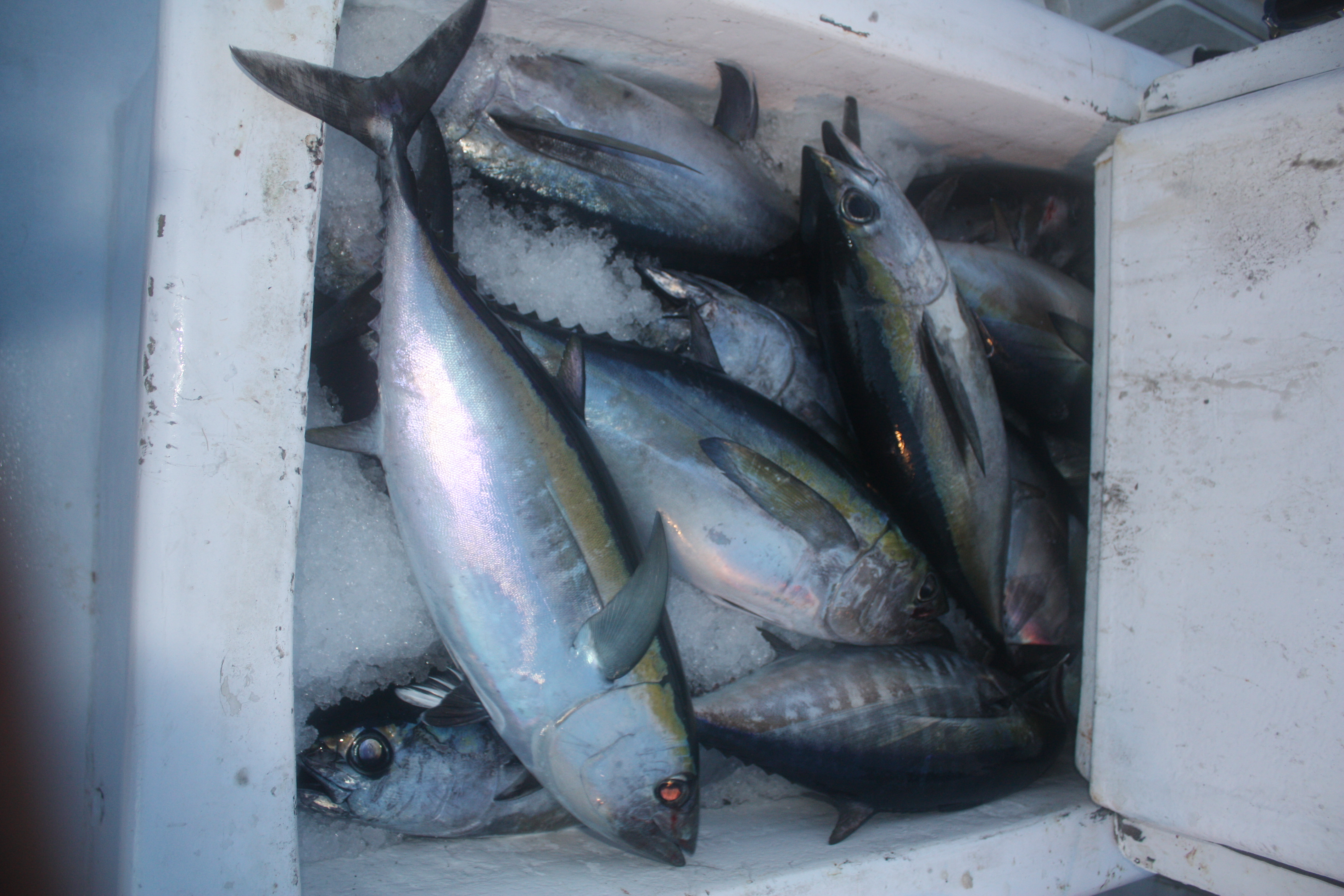
A long range, 2-day blue-water trip is not cheap, but it compares favorably to two full days of inshore fishing with a guide. Captain Mike says, “Most trips have 10 people on them. The usual cost to each angler is $650 per angler and there will be a tip for the deckhands (the best money the angler will spend on this kind of trip). Fish cleaning will cost extra, but it’s worth the cost to have an expert clean and fillet the caught fish.”
For the trip, each angler will need to bring a pillow, sleeping bag and towel. There’s a hot shower on board and food. A Big Green Egg grill is on board for cooking and microwave for heating. Bring lots of water and soft drinks. Alcoholic beverages are allowed, but please drink responsibly. Sunblock, sunglasses, hat and Ziplocs come in handy.”
We’re Not Catching Bream Here!
Overnight blue-water trips are different from afternoon quick runs to the local bass pond.
Capt. Mike Thierry tells us, “We can bottom fish some. We keep up with what is biting where, so we plan our trips accordingly. We troll for the big-game species like tuna, wahoo, mahi mahi, blue marlin, white marlin and sailfish. We fish with live baitfish around the rigs and chum/chunk for tuna. We also fly a kite with a live bait under it for tuna and we use jigs. During the course of a trip, we may do all of the above. We try extremely hard to make sure we catch fish.”
When it comes to the fish that are commonly caught on the overnight fishing trips, anglers need to come ready for some work and fun.
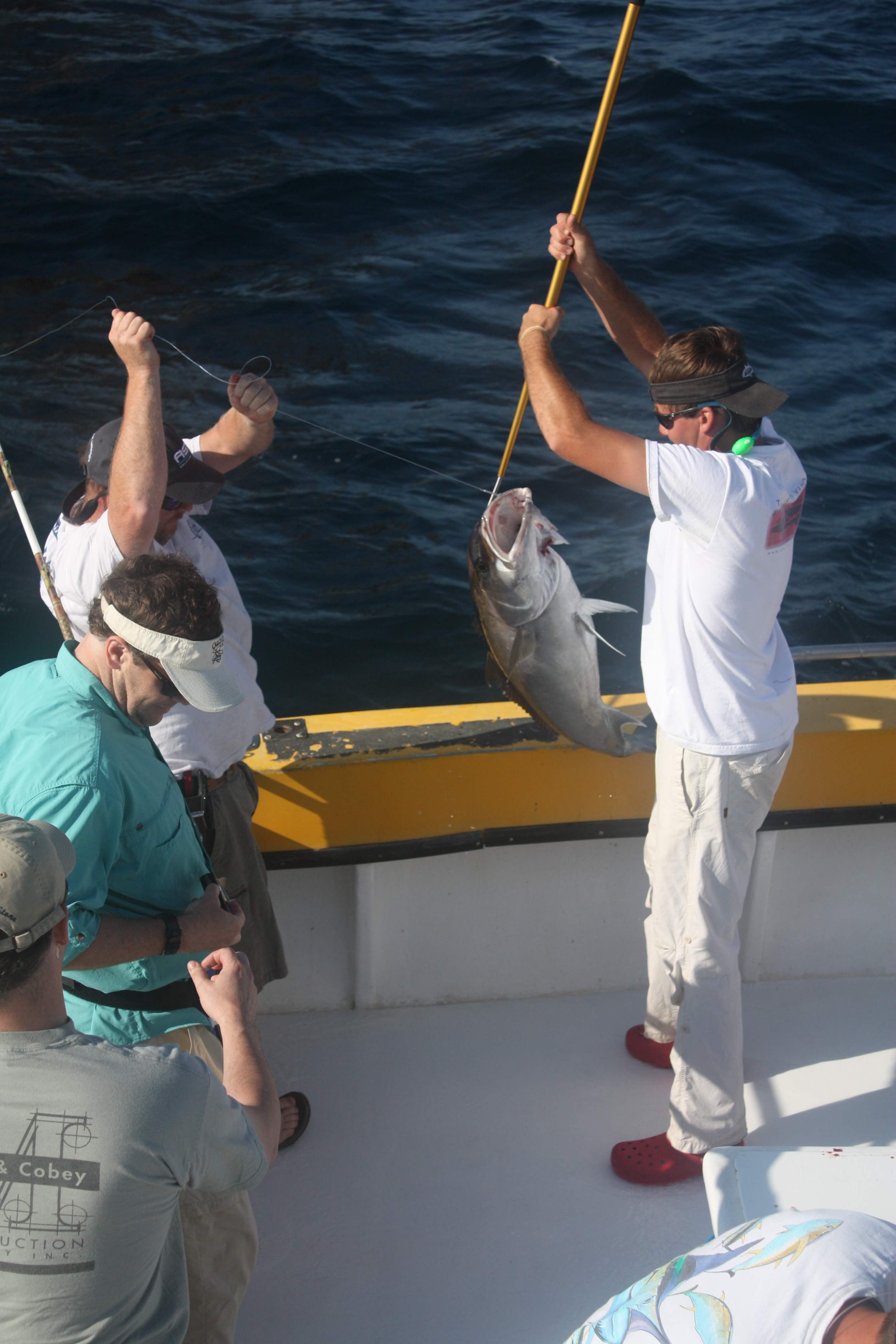
Capt. Skipper Thierry says, “Yellowfin tuna average 40 to 80 pounds, but it is not uncommon to catch them up to 200 pounds. Blackfin tuna average eight to 15 pounds and a big one is 25 pounds. Wahoo average 30 to 50 pounds and can go up to 100 pounds. Mahi mahi average 15 to 25 pounds, but they can exceed 50 pounds. Blue marlin average 200 pounds, but the biggest one we’ve ever caught was a whopping 753 pounds. Swordfish average about 50 to 120 pounds, but they can go up to 450 pounds. A normal fight with one of these big fish can be as short as 30 minutes or last up to several hours or more – man versus fish!”
Special Considerations
A blue-water trip is a true long distance run. When the boat arrives at the fishing grounds on a blue-water trip, anglers will be far away from land and everything that goes along with that. Quite literally, the boat and its crew are out of touch with most of the regular means of communication. The boat has its radio communications, of course, but individual anglers probably won’t be able to check in at home or keep up with business while on the trip.
Cell phones won’t work when the boat clears the inshore waters, so an overnight fishing trip means anglers will be out of touch with land and all of the troubles that come from being on land. This loss of cell phone use stresses some folks, but I like being out of touch quite a lot when I’m on these trips.
When booking a long distance overnight blue-water trip, anglers need to keep in mind that the boat won’t turn around and bring a seasick angler back to port, thereby ruining the trip for everyone else. If seasickness is a problem, make sure that Dramamine or other effective seasickness medications are aboard. Any other health considerations such as daily medications must be kept in mind. Bring the meds along and take them on schedule.

A common “problem” that anglers on overnight blue-water trips have to deal with is that often the anglers will come back to shore with lots and lots of delicious fish. Good storage and care of the fish should be arranged beforehand. Offering some fresh fillets to friends and neighbors is a good way to deal with the load of fresh fish that will likely go home with each angler on a long distance fishing trip.
Another special consideration for anglers looking toward one of these big-game overnight fishing trips is that a little work geared toward getting the angler in good physical shape and ready for some very hard, but very rewarding, work catching some very big fish is a good idea. Catching big tuna or billfish requires anglers to be in pretty good physical condition.
Important Contact Information:
Captain Mike’s Deep Sea Fishing
251-861-5302
This article first appeared in the August 2017 print issue of Great Days Outdoors Magazine. For more great hunting and fishing content for the deep South, subscribe to Great Days Outdoors print and digital editions or click the image to download this issue.

